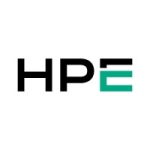You use vCenter in data center operations as the core of your investment infrastructure, coordinating products like NSX, HSL, HSAX, and Cyber Recovery Manager.
Some of the most valuable features of vCenter are LACP and vSphere Distributed Switches, as they simplify VLAN propagation between hosts and enable networking duplication and replication, particularly beneficial in hyper-converged network environments.
Areas for improvement with vCenter include changes in licensing models, such as the shift to a subscription model, which may increase costs and lead to conflicts.
I have been using VMware vCenter for ten years.
I would rate the stability of vCenter as almost a perfect ten out of ten.
I would rate the scalability of vCenter as a ten out of ten.
The main differences between Azure and VMware include the level of control and integration. VMware offers a comprehensive server and virtualization solution with extensive control, while Azure provides integration with other Microsoft services but may lack complete control over networking and troubleshooting processes.
The initial setup of vCenter is now straightforward, especially with the virtual appliance. Typically, one person can handle deployment and configuration, and maintenance is rarely required due to the product's stability.
With the subscription model, pricing for vCenter may be higher compared to the previous perpetual license model. The subscription model requires ongoing payments, and if you stop paying, you may lose access to updates and support.
vCenter has significantly simplified VM deployment and management processes, making tasks easier and more efficient. Its centralized features are highly valued, especially when compared to other solutions like Microsoft's System Center Virtual Machine Manager, which lacks certain functionalities.
The scalability feature of vCenter has supported our growth by providing flexibility and efficiency. As an expert, I have found it invaluable in resolving issues and managing growth, especially during transitions to cloud-based infrastructures like Azure, which have reduced the need for extensive on-premises resources.
Our experience with vCenter backup and recovery functionalities involved integration issues with our existing tool. Currently, we use Commvault for backup, which is straightforward to configure but lacks full integration capabilities.
I would recommend VMware vCenter to others because it is a stable and reliable product. However, new users should consider the costs associated with the subscription model.
Overall, I would rate VMware vCenter as a ten out of ten.















